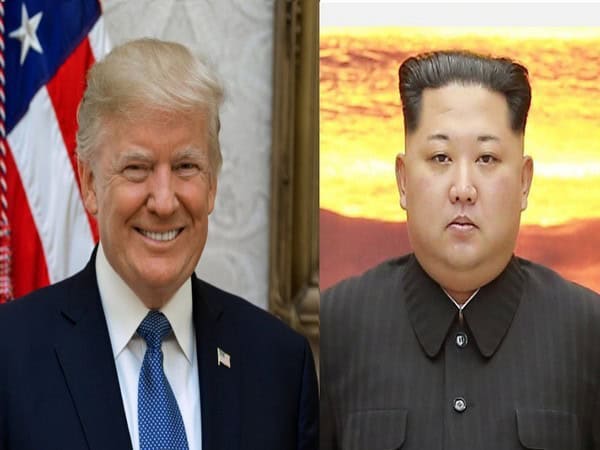New Delhi: An ‘historic’ moment is set for this Tuesday when United States President Donald Trump and North Korean leader Kim Jong Un will hold talks in an unprecedented summit at Changi in Singapore.
The two world leaders are scheduled to conduct a private meeting – the first-ever between a sitting US President and a North Korean leader and one that North Korea hopes will forge a “new relationship” with America.
While the summit comes after months of deliberations, second-thoughts and coaxing by strategic neighbours including South Korea and Japan, hopes are high that Trump and Kim will map out a plan to end the decades-old nuclear stand-off on the Korean Peninsula
Interestingly, four years ago, Trump had dismissed the very idea of visiting North Korea, tweeting, “No interest, last place on Earth I want to go to.”
Cut to the present and the scene is a little different. He may not be in North Korea, but he has taken massive initiatives to ensure that for once he is holding talks with “unknown personality,” a phrase he earlier used for Kim in a press conference.
The Singaporean summit follows decades of tough diplomatic wrangling on North Korea by the past US administrations, most of which were a failed attempt.
Unlike in the past, the nuclear capability of North Korea is far more capable and advanced which places the country in a renewed position of strength.
According to several media reports, the upcoming summit will be an opportunity for Pyongyang to be treated as an equal to the US.
The journey of North Korean denuclearisation started in 1985 when it acceded to the nuclear non-proliferation treaty. Later in 1993, the North Korean regime gave a notice of intent to withdraw from the nuclear treaty. Though, following discussions with the US at the United Nations North Korea continued to be part of the treaty.
In 1994, former US president Jimmy Carter visited North Korea to lay the groundwork for bilateral diplomatic talks.
Later that year, the Bill Clinton administration signed an “Agreed Framework” with North Korea to freeze its nuclear programme. Following this, Pyongyang agreed to freeze the construction of nuclear reactors and production of plutonium in exchange for economic benefits.
Then in 2000, a senior North Korean military leader, Jo Myong Rok, visited Washington D.C. to meet the then president, Bill Clinton, that was followed by a meeting with former North Korean leader Kim Jong Un II. These talks ultimately failed.
It was then reported that the ‘Agreed Framework’ also broke down.
Former president George W Bush took a harder-line stance on Pyongyang than his predecessors, who accused North Korea of pursuing a ‘secret’ uranium enrichment programme. However, Pyongyang in return accused them of pulling out of the framework at last moment.
Then in 2003, along with the US, Japan, South Korea, and Russia also endorsed the idea of North Korea’s denuclearisation in six-party talks, though the latter stuck to its stance of being a nuclear state.
In 2006, North Korea conducted its first nuclear test dealing a blow to the already weakened ties with the US. Despite that, in 2009, Clinton visited North Korea and successfully negotiated the release of two imprisoned American journalists.
Finally, in 2012, former president Barack Obama imposed irreversible sanctions upon North Korean regime. In spite of that, North Korea continued to make strides in its nuclear programme.
Trump then engaged in a constant firing against North Korea, threatening to end its nuclear programme. Trump announced renewed sanctions on latter targeting its ship and trading companies.
Further, Trump and Kim called each other “mentally deranged US dotard” and “Little Rocket Man” respectively.
Earlier on May 10, North Korea released three US ‘detainees,’ paving the way for the summit.
In spite of Kim threatening to call off the summit talks following the ‘Max military drills’ and Trump announcing to call off the event, citing “tremendous anger and open hostility” from North Korea as the reason, the unprecedented summit is bound to happen on Tuesday.
ANI

